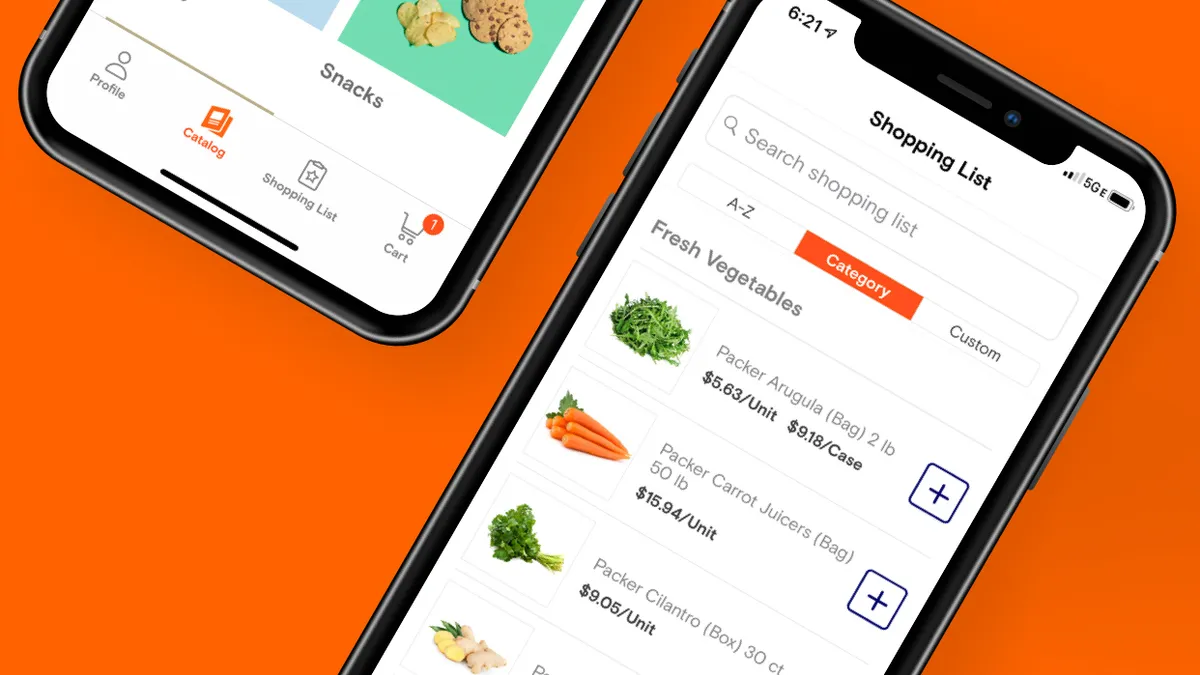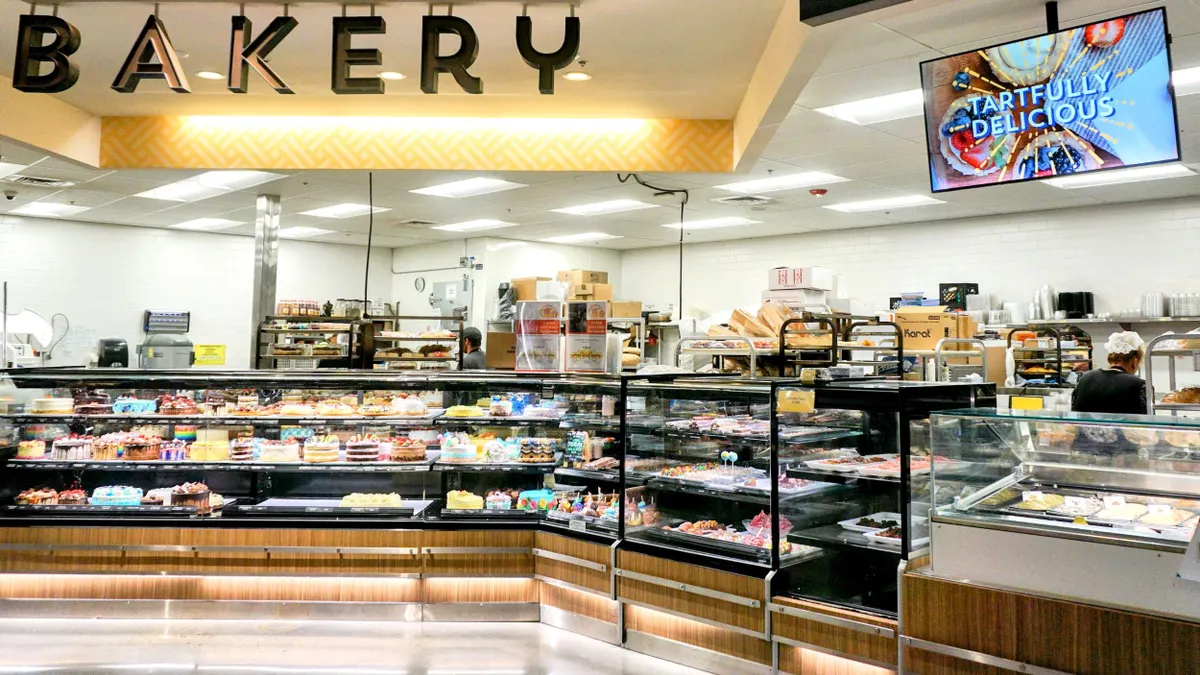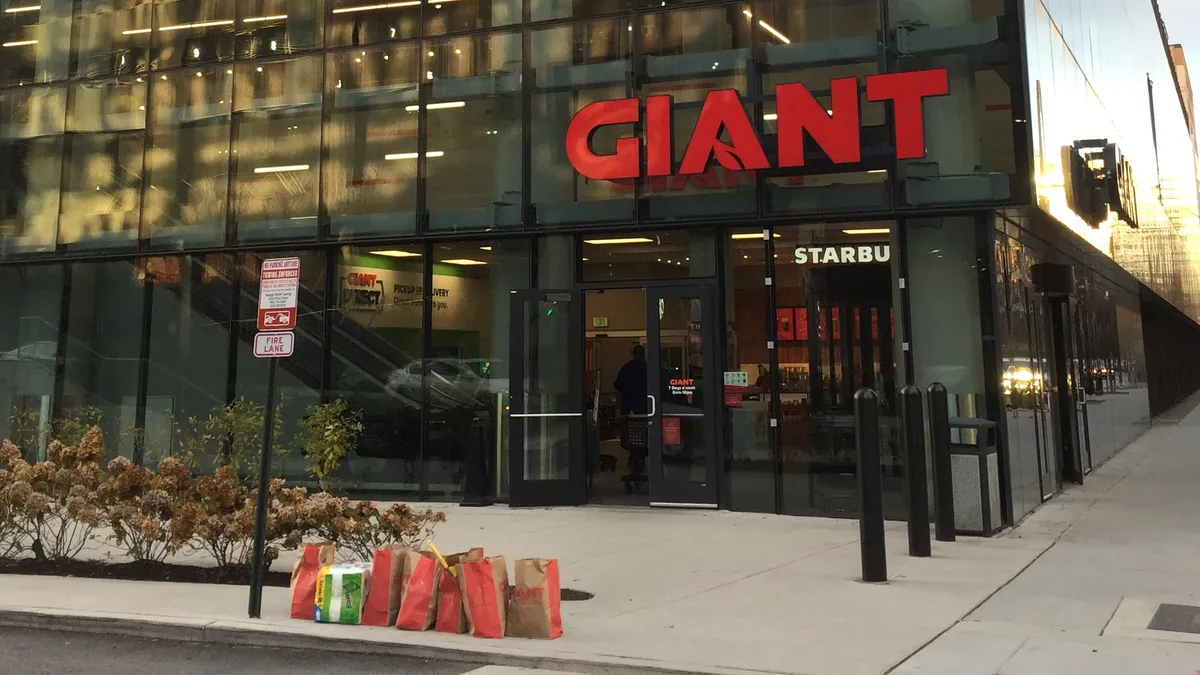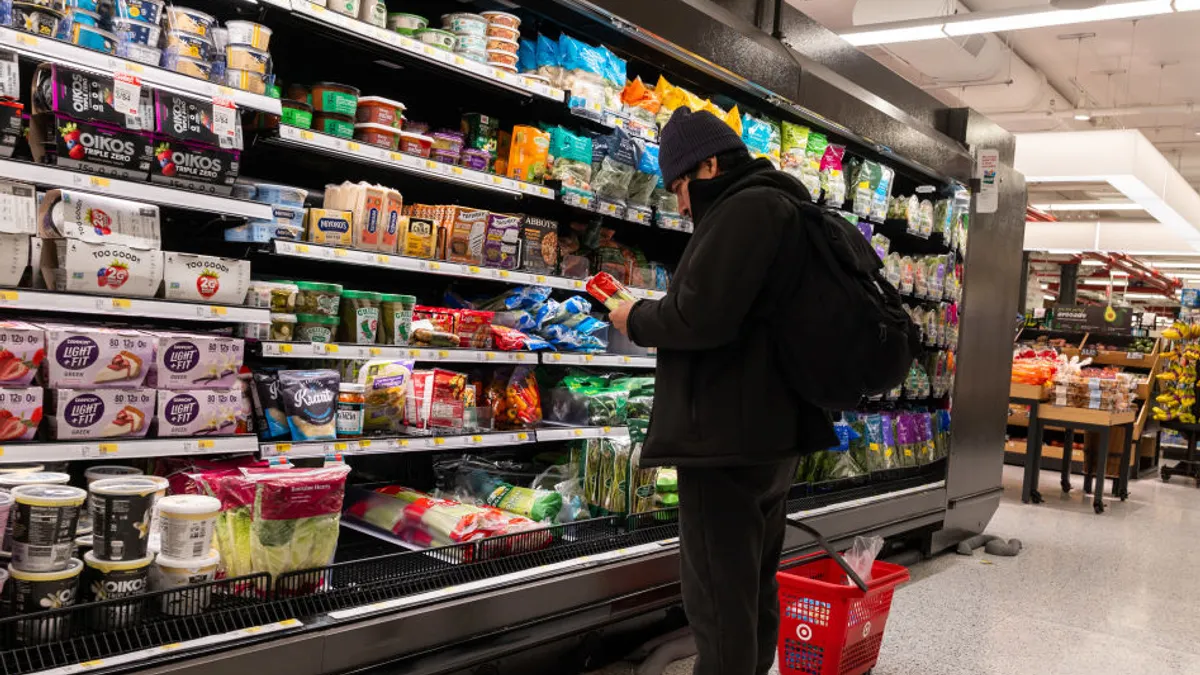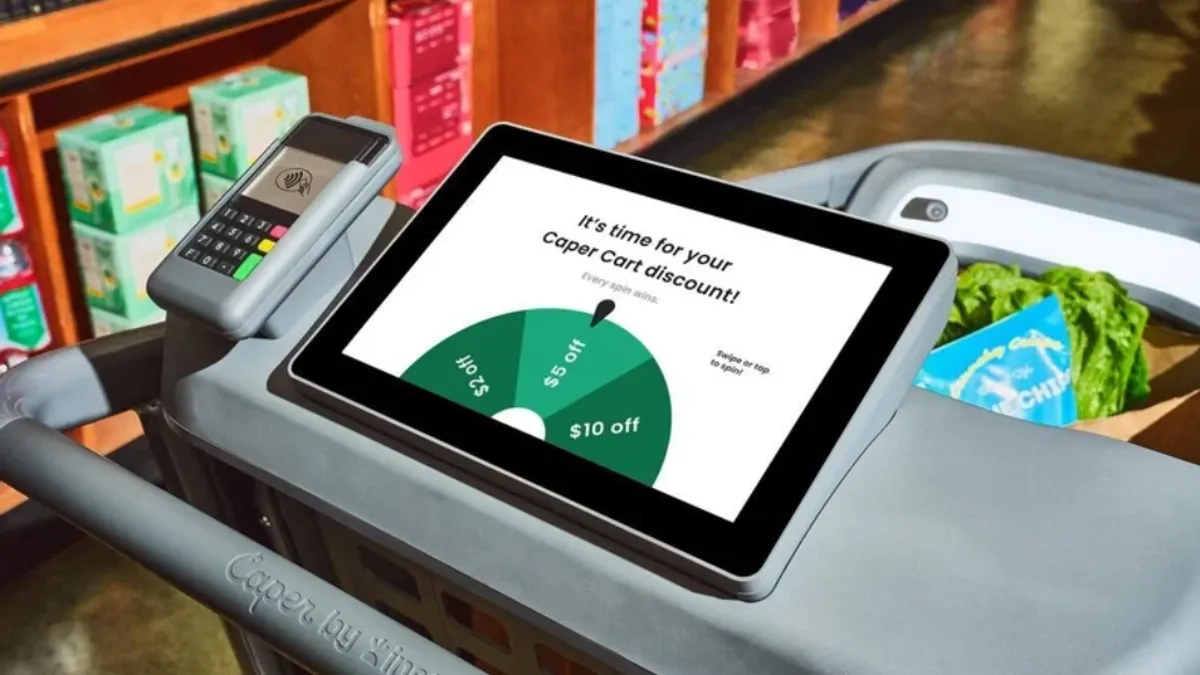Since March, the grocery industry has witnessed tens of millions of grocery app downloads, translating to well over 100% growth for major names like Instacart, Shipt and Walmart. The new demand calls for new features that will enrich the user experience and make grocery shopping quicker and more seamless than ever.
But app updates aren't just a matter of maintenance these days. More than just add-ons, grocery apps have become the entire store experience for many shoppers, and the demand for an easy, enjoyable experience has never been higher.
At Choice Market in Denver, CEO Mike Fogarty said the company's new app, which is set to launch in August, and corresponding digital tools are aimed at creating a cohesive omnichannel experience for customers, whether they order ahead, for delivery or at one of the in-store kiosks.
"It’s more than just an app — it’s really the next iteration of Choice," Fogarty said.
The sentiment is one that CEO Pradeep Elankumaran of San Francisco-based Farmstead shares. Elankumaran, who along with his team will launch Farmstead's first-ever app this fall, told Grocery Dive that apps are "the new storefront." He noted that Farmstead is focused not just on its app or mobile site, but a fully unified system from marketing all the way to a customer's doorstep.
Business in the time of COVID
Grocery app usage has soared in recent months as customers have flooded e-commerce platforms and major retailers have made updates. In April, the Walmart Grocery app, which has since merged with Walmart's main shopping app, saw 460% growth in average daily downloads compared to January, according to data from App Annie. Target, which has expanded same-day grocery pickup to more than 1,000 stores in 47 states, saw a 98% increase in daily downloads of its app early in the pandemic.
That surge in downloads has given retailers a much larger base of mobile users through which to drive online sales and brand engagement.
When it comes to app innovation, a lot of activity is coming from grocery startups and formats that offer alternatives to traditional supermarkets. Many have seen business boom as COVID-19 drives unparalleled demand for online grocery and are working tirelessly to get updates rolled out, while others have plans for entirely new apps.
Before the pandemic hit, Cheetah was the fifth largest restaurant distributor in the San Francisco Bay Area, working with restaurant owners and chefs to offer ingredients and supplies for next-day delivery. When the coronavirus hit, the company made the decision to open its app up to consumers who were struggling to buy groceries from online providers like Amazon, Instacart and San Francisco-based Good Eggs.
Because the restaurant industry had slowed dramatically, Cheetah had a warehouse filled with bulk supplies its restaurant customers weren’t ordering, from meat and produce to hand sanitizer and toilet paper. The company focuses on stocking a limited number of SKUs, but within that shoppers can still find all their grocery essentials, dairy products, organic produce, a variety of beverages and household items from local and national brands.
Since the pivot, Cheetah has been quick to integrate new features like pickup and delivery into its app to serve grocery customers.
"We turned our trucks into mobile warehouses that are essentially going around the Bay Area into different pickup locations where you as a customer have a completely contactless experience," said founder and CEO Na’ama Moran.
Pickup is free, and Cheetah also recently added a home delivery option to its app, which costs $12 per order for orders of $250 or less.
Farmstead, which is also based in the San Francisco Bay Area, saw business surge as well when shelter-in-place orders hit California. Elankumaran said its mobile demand grew nearly five times, and has been steadily increasing since.
Now that Farmstead and other grocers have regained their footing, they're refocusing on their apps as part of push for "the growth and retention that we're looking for," Elankumaran said.
"For every online grocery provider, there was such a surge in demand that no one was able to capture all of it," he noted.
Farmstead is seeing more customers take advantage of its weekly program where they set a recurring delivery time every week, and same-day delivery slots have returned. Same-day and weekly delivery ordering will be integrated into Farmstead's upcoming app, as well as advanced personalization that goes beyond what shoppers see on its website.
Elankumaran said it's taken the company time to build the digital experience, integrate it with warehouse economics and identify user processes and patterns that generate results for shoppers. Now the company is confident enough about its customer experience to bring it to a native mobile app, he said.
Additionally, with more and more people turning to their mobile devices for grocery orders, there’s an opportunity for more discovery and incorporating ideas that are unique to digital.
"A lot of things that technology can do, stores can never do. Unfortunately, technology can do the things that stores do very well," Elankumaran said.
Instacart began looking at how COVID-19 might impact its business before the uptick in demand even began in March, Mark Schaaf, Instacart’s chief technology officer, told Grocery Dive in an email. To date, the company has launched more than 15 new products and features in its app to address customer safety and service.
"COVID-19 has radically transformed the way that people put food on their table, and it’s required us to redesign our products and systems to meet the 500% year-over-year demand increase we’ve observed," Schaaf said.
How apps are evolving
At Instacart, Schaaf said item availability has been one of the biggest challenges during the pandemic. Its machine learning team had to quickly make changes to its item availability model so shoppers would get the most up-to-date information when they opened their app to shop.
Since those behind-the-scenes updates, customers now see out-of-stock badges on items in the app as they browse, and low or out-of-stock items drop further down in search results.
"Leave at my Door" delivery was another update Instacart added to its app and website at the start of the pandemic. This allowed both customers and Instacart shoppers to maintain physical distance. The feature had actually been in testing mode since late last year, and Schaaf said Instacart fast-tracked the development so it could roll out in mid-March.
Instacart’s "Fast and Flexible" order feature, on the other hand, went from idea to test in a matter of just two weeks. The option allows customers to opt for a first-available delivery window in their area rather than selecting a normal pre-scheduled delivery window. Instacart also recently introduced "Order Ahead" to expand available delivery windows and allow customers to plan grocery orders up to two weeks in advance.
"The improvements we made to the app over the last few months, like our enhanced availability predictions, along with our new cart maximum functionality, help us set expectations appropriately, and create a seamless experience for customers, shoppers and retailers," Schaaf said.
Choice Market, which operates two hybrid convenience stores in the metro Denver area, is preparing to roll out a new suite of digital tools when its third location opens in mid-August. In addition to its new app, Fogarty said the launch will include a new e-commerce site, a loyalty program and an updated delivery program featuring a fleet of electric vehicles.
The plans for the updated tools were in place before COVID-19, Fogarty said, and the company has been well-positioned to serve customers during the pandemic because it was already built on a model of delivery, pickup and off-premise consumption.
"But it wasn’t a fully integrated and cohesive user experience across the different channels," he said. "We knew we were creating a really great in-store experience and we want to make sure the digital experience kind of mirrors the experience in the store."
"We knew we were creating a really great in-store experience and we want to make sure the digital experience kind of mirrors the experience in the store."

Mike Fogarty
CEO, Choice Market
The new app will make it easier for Choice customers to purchase regular grocery items, which are often natural, organic or local, alongside prepared meals like bowls or smoothies as well as alcohol. In addition, pickup and delivery will be available, with delivery taking place in as little as 45 minutes.
"You have real-time driver tracking, customer reviews [and] communication with the drivers. So it will be very much that on-demand experience," Fogarty said.
One other new tool that will be available through the app is a recipe feature. Choice has teamed up with local Denver food influencers and chefs who will write recipes that will become shoppable through the app and website.
"If you want to make chicken parm [one] night, we’ve got a great recipe. And you hit one button and the chicken, the flour, the mozzarella are all added to your cart," he said. "And then you have a nice recipe once it gets delivered to your home. We’re going to be leveraging that tool and really integrating a lot of our great local brands."
Mealtime is also on Moran’s mind as she and her team update Cheetah to reflect the needs of grocery shoppers during COVID-19. Cheetah's app now has a feature that allows customers to order restaurant meals alongside their grocery orders. The company is collaborating with some of its restaurant partners like iconic San Francisco bakery Tartine and popular pizzeria Zero Zero to offer packaged restaurant items for consumers.
Items will be pre-packed and in some cases frozen or flash frozen so customers can heat them up or open them to serve as part of a meal at home.
"It’s a really nice way to mix and match things, to support local restaurants and maintain the ability to order from these restaurants even during COVID and cut off the time needed to make dinner," Moran said.
Another unique feature of the Cheetah app is the LiveCart feature, which allows customers to update their cart in real time. If they forget any items after placing the order, they can still update their cart until midnight without having to place a new order.
And while Cheetah has added many consumer-friendly sizes to its warehouses since it began offering groceries, shoppers can also still access the bulk sizes that restaurants buy, as well. Moran said she’s seen many shoppers using group purchasing where they’ll share orders with neighbors, family or a shared household. As the app continues to develop, that will become even easier, she said.



